
Painter & Decorator Health & Safety Documents

Master health & safety for your decorating business with our essential tools.
Quickly elevate health & safety standards in your painting & decorating business by managing health & safety yourself. Our retail health & safety documents, templates, and guidance are designed to be straightforward and user-friendly. Many are pre-populated with relevant information and pre-filled examples are included to make filling in your documents much easier.
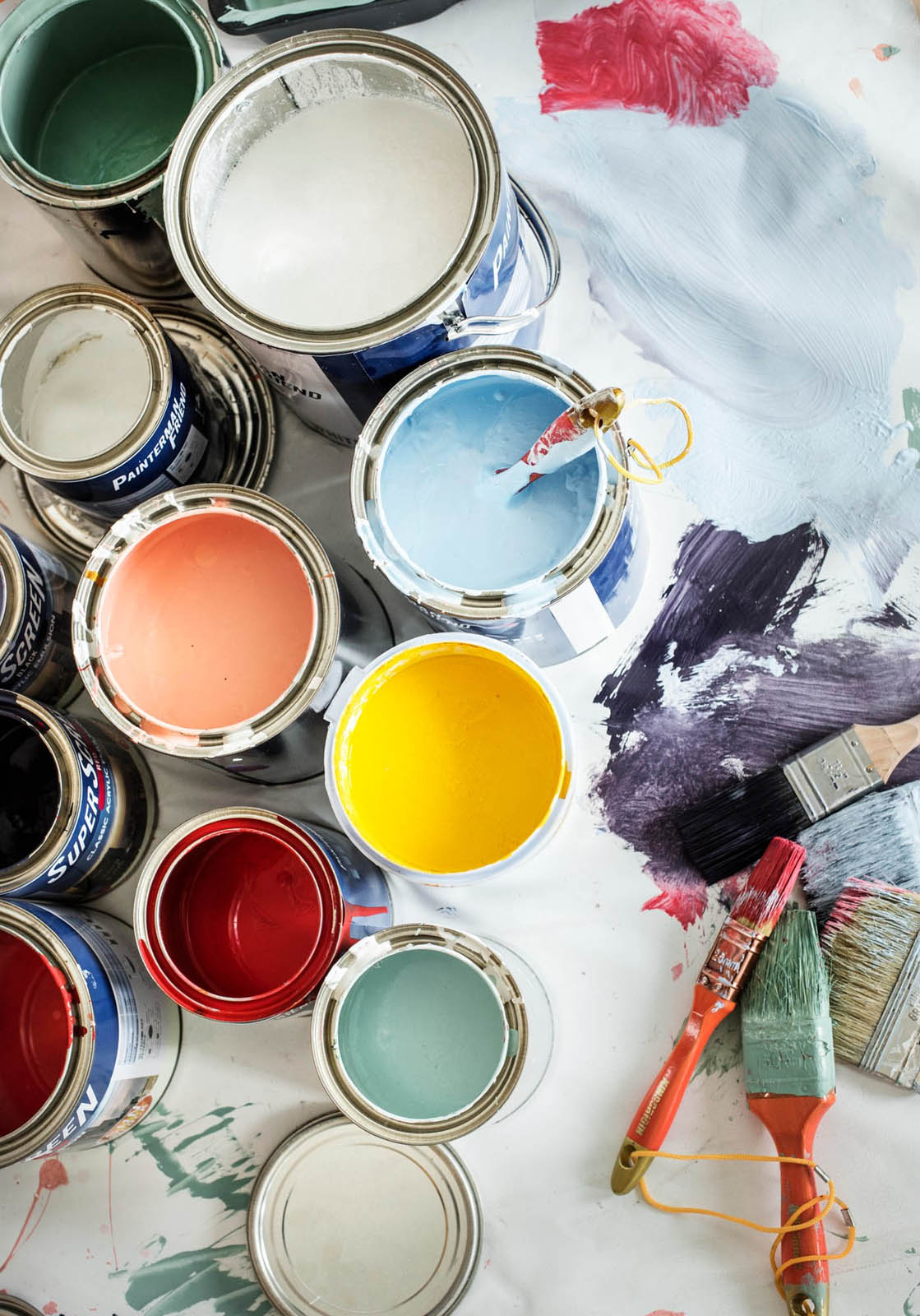
Covering All Bases: Health & Safety for Decorating Professionals in the UK
In the vibrant world of painting and decorating, the canvas is as broad as the buildings and spaces that crisscross the UK's architectural landscape. Yet, beneath the brush strokes and the hues of the latest colour trends lies a critical framework that ensures the masterpiece is completed safely and sustainably: Health & Safety.
The Essence of Health & Safety
Health & safety in the painting and decorating sector is not just a regulatory requirement; it's a cornerstone of professional practice that safeguards the well-being of professionals and clients alike. At its core, it is about mitigating risks associated with the trade, from the heights of a ladder to the chemicals in a tin of paint.
Chemical Savvy: More Than Just Knowing Your Colours
Chemicals are the lifeblood of the painting profession, but they can also pose significant risks. Paints and solvents often contain hazardous substances that can lead to long-term health issues if proper care is not taken. Respiratory protection, skin care, and understanding COSHH (Control of Substances Hazardous to Health) regulations are not just best practices—they are essential chapters in the painter’s safety manual.
The Highs and Lows of Working at Height
The risk of falls from height is a stark reality for painters and decorators. Whether it's a step ladder or scaffolding, each elevation carries potential dangers that must be navigated with expertise and caution. The Work at Height Regulations 2005 are not mere guidelines; they are the lifelines that tether a worker to safety.
Combatting the Unseen Enemy: Repetitive Strains and Physical Stress
Repetitive movements and physical demands are silent adversaries in the painting and decorating industry. A flick of the wrist or an overreached stretch may seem inconsequential, but over time, they can culminate in musculoskeletal disorders that can hinder a professional's ability to work and significantly impact their quality of life.
The Business Sense of Safety
Beyond the moral imperative, there's a strong business case for robust health and safety practices. Accidents and ill-health can lead to downtime, legal ramifications, and reputational damage. Conversely, a strong safety record can become a badge of honour, a testament to a business’s commitment to excellence and care for its team and clientele.
-
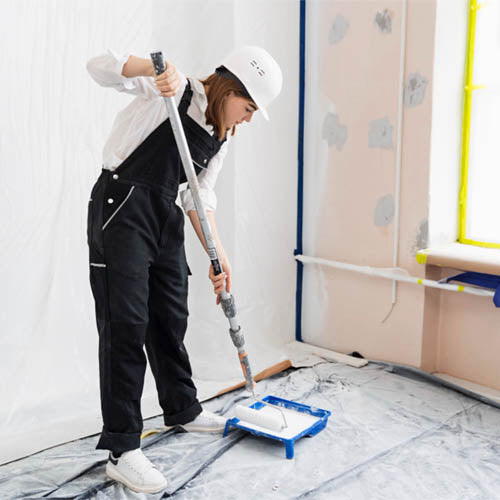
Physical Strain & Repetitive Movements
The nature of painting and decorating work often involves repetitive movements, awkward postures, and handling heavy equipment, which can lead to musculoskeletal disorders, strains, and sprains. Proper training in manual handling, ergonomic working practices, and regular breaks are important to prevent these physical strains.
-
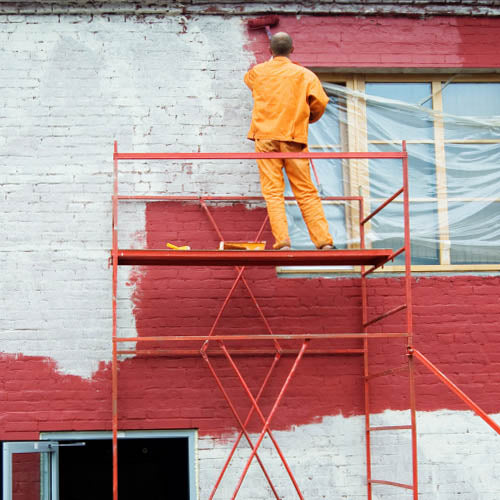
Working at Height
Jobs often require working on ladders, scaffolding, or elevated platforms, posing fall risks. Falls from height can result in serious injuries and are a leading cause of workplace fatalities. Complying with the Work at Height Regulations 2005, which includes conducting risk assessments and using appropriate access equipment, is necessary to help mitigate this hazard.
-
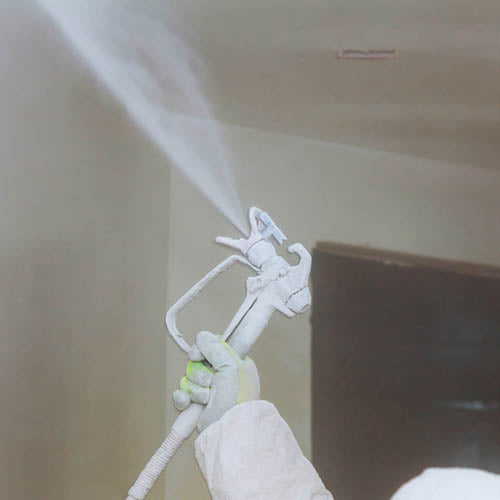
Chemical Hazards
Painters and decorators are often exposed to various chemicals in paints, solvents, and cleaners. Inhalation of fumes and dust can lead to respiratory issues, and skin contact with these substances can cause dermatitis and other skin conditions. Following the Control of Substances Hazardous to Health (COSHH) regulations to manage these risks is essential.

Why pay expensive consultant fees when you can manage H&S yourself?
Improve your compliance while saving time and money by creating health & safety documents, customised to your business, yourself. Our Painting & Decorating health & safety range covers a suite of essential documents including health & safety policies, risk assessments, COSHH forms, fire safety documents, health & safety guidance, safety posters and more.
Benefits of managing H&S yourself...
-
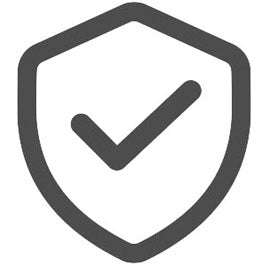
Improve safety
Health & safety at work is about preventing accidents, incidents and ill-health by assessing the work environment, the activities within it, and taking appropriate action.
-

Increase compliance
Our ready to use documents, many of which are prefilled, will enable you to quickly increase your compliance to UK health & safety law.
-

Save money
With UK H&S consultants often charging upwards of £400 per day, there is a better way. Take control and save yourself time and money.

Investing in Safety: The Smart Strategy for Decorating Businesses
Small painting and decorating businesses often find themselves stretched thin, grappling with the immediate demands of completing projects, satisfying clients, and managing a lean budget. The thought of dedicating already scarce resources to the complexities of health & safety compliance can seem like an undue strain. After all, the time spent on understanding and implementing these regulations is time not spent on the job, and the money invested is money not used for materials, wages, or growth.
However, the long-term risks of skimping on health & safety measures far outweigh the initial outlay. Accidents on the job can result in costly downtime, legal liabilities, and could dramatically increase insurance costs. For a small business, these are not just expenses; they're threats to the very survival of the enterprise.
Investing in health & safety is an essential aspect of business management that pays dividends by preventing costly incidents and ensuring that the workforce is protected. Adopting simple, efficient safety protocols and training can help to weave these critical practices into the day-to-day operations, safeguarding the business's future without overwhelming its present.
At easyhealthandsafety.com we aim to take the friction out of health & safety for painters and decorators by providing products and guidance so simple to use they are almost enjoyable.
Frequently Asked Questions
Health & Safety for Painters & Decorators: FAQs
What personal protective equipment (PPE) should painters and decorators use?
Essential PPE will have been identified in a risk assessment, examples of PPE include safety goggles to protect the eyes from splashes, dust masks to prevent inhalation of hazardous substances, gloves to protect the skin from irritants and chemicals, and overalls to protect the body. It is crucial that all PPE is compliant with the Personal Protective Equipment at Work Regulations 1992.
How should painters and decorators deal with working at heights?
When working at heights, it's important to use stable, well-maintained ladders, scaffolding or other secure platforms. Training is essential, and the Work at Height Regulations 2005 mandate planning and risk assessment to ensure safety. Where possible, use extendable tools to minimise the need for height work.
What are the guidelines for handling paint and solvents?
The Control of Substances Hazardous to Health (COSHH) Regulations 2002 provide guidelines for handling paints and solvents, which include using appropriate PPE, ensuring good ventilation in the workspace, and safe storage of materials. It's also advised to use water-based paints over solvent-based ones when possible to reduce fume inhalation risks.
Find our range of blank and prefilled COSHH risk assessments here.
How can painters and decorators minimise the risk of repetitive strain injuries?
Regular breaks to stretch and relax muscles are important, as is using ergonomically designed equipment that minimises effort and strain. Learning and practising good posture and lifting techniques during training can significantly reduce the risk of such injuries.
What are the risks associated with dust and how can they be mitigated?
Dust from sanding and other preparation work can cause respiratory problems. To mitigate this, use dust sheets to collect debris, employ vacuum sanders, wear appropriate masks, and ensure spaces are well ventilated. Regular cleaning to remove dust accumulation is also key.
What should be included in a health and safety policy for a small painting and decorating business?
The policy should encompass risk assessments for specific tasks, emergency procedures including evacuation plans and contact information, training records for health and safety, and guidelines on the use and maintenance of PPE. It should also include reporting procedures for incidents and accidents.
Find our one page Health & Safety Policy Statement here.
How often should risk assessments be conducted?
Risk assessments should be carried out whenever there is a significant change in working practices or equipment, or when new information about potential risks becomes available. It's recommended to review assessments regularly, at least annually, to ensure they remain relevant and comprehensive.
Find our simple to use Painter & Decorator Risk Assessment Templates here.
What training is required for painters and decorators regarding health and safety?
Completing a risk assessment will identify what type of training the business needs. As an example, training programmes could cover key areas such as manual handling, working at heights, understanding COSHH regulations, and proper use and maintenance of PPE. There may also be a need for training on specific tools and equipment. It's important that the training is recognised and meets industry standards.
How can painters and decorators ensure electrical safety?
To ensure electrical safety, use tools that are battery-operated to eliminate the risk of electric shock. When using corded tools, check regularly for damaged cords and insulation breaks. Always use a residual current device (RCD) to provide additional protection against electric shock.
What should be done if someone is injured on the job?
Immediate first aid should be provided by a qualified individual. The incident should then be reported under RIDDOR if it is a serious injury, over-seven-day injury, specified injury, or a work-related disease. Following an incident, it's critical to review and update safety procedures to prevent similar incidents in the future.
Find our simple to use Accident Report Form here.







